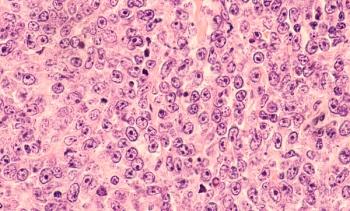
Co-occurrence of Certain Migraine Symptoms Indicates a Common Pathophysiology
Patients who have migraine often suffer from coexisting issues, such as sleep difficulties, vertigo, and dizziness. A study evaluating the presence of certain symptoms in patients with migraine indicated that some may have a common pathophysiology.
Patients who have migraine often suffer from coexisting issues, such as sleep difficulties, vertigo, and dizziness. According to a new paper
The researchers evaluated the presence of certain symptoms in patients with EM and CM and sought to determine the association between these symptoms and Migraine Disability Assessment (MIDAS) scores. Overall, 897 EM patients and 183 CM patients were included in the study.
The authors found that vertigo/dizziness, cutaneous allodynia, concentration-related impairment in function, and abnormal sleep latency were significantly more frequent in patients with CM. These patients also had higher MIDAS and visual analog scale for pain scores.
As for cranial autonomic symptoms (CAS), except for rhinorrhea and facial/forehead sweating, which were more prevalent in patients with CM, there were no significant differences between the 2 groups. Among the overall study population, 69.4% had at least 1 of the CAS and 61.4% had vertigo/dizziness.
The researchers found that abnormal sleep latency and concentration-related impairment in function were more likely to occur in patient groups with CAS, vertigo/dizziness, and cutaneous allodynia than patients without those symptoms.
In a majority (60%) of patients with migraine, it took longer than 30 minutes to fall asleep, and for 16.7% of patients, it took patients longer than 30 minutes more than 3 times a week. Among the CM population, 39.3% had sleep latency longer than 30 minutes more than 3 times a week.
In the overall study population, CAS, vertigo/dizziness, and cutaneous allodynia tended to co-occur.
“One of the most important findings in our study was the coexistence of CAS, vertigo/dizziness, and cutaneous allodynia in patients with migraine,” the authors wrote.
The trigeminovascular system is thought to have a role in CAS. Cortical spreading depression and migraine-related transmitters, such as calcitonin gene-related peptide, explain migraine with vertigo, but experimental studies have now also indicated a possible connection between vestibular and trigeminal nuclei. Finally, cutaneous allodynia is associated with trigeminal nucleus caudalis.
As a result of currently known mechanisms and the co-occurrence of CAS, vertigo/dizziness, and cutaneous allodynia, the authors believe sensitization of trigeminal nuclei may be responsible for generating the symptoms.
“The co-occurrence of CAS, vertigo/dizziness, and cutaneous allodynia in migraine suggests that these symptoms have a common pathophysiology that varies depending on the activation of trigeminal pathways,” the authors concluded.
Reference
Ceylan M, Yalcin A. Coexistence of symptoms associated with trigeminal pathways in chronic and episodic migraine and the effects on quality of life. [published online September 14, 2018.] Pain Med. doi: 10.1093/pm/pny118.
Newsletter
Stay ahead of policy, cost, and value—subscribe to AJMC for expert insights at the intersection of clinical care and health economics.







































